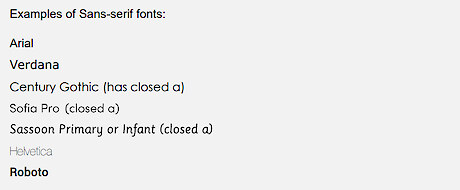Dyslexia Friendly Guidelines for Effective Communication and Advertising.
- Use clear and simple language
Avoid using complex or technical terms and use short and simple sentences. Keep sentences short and to the point. Rather than using multiple sentences to say something, use a single sentence.
For example:
- Short and simple: “Call us to schedule an appointment”
- Long and complex: “If you are interested in scheduling an appointment with us, we would be more than happy to set that up for you. All you have to do is give us a call and we can take care of the rest.”
In addition to this, using lists, bullet points and headlines are an effective way to break up the text and make it easy to scan for people with dyslexia.
- Staying away from white backgrounds
Use a light coloured background to help reduce glare. Using a white background can make it difficult for dyslexics to concentrate on what they need to read. Using coloured backgrounds whether it is coloured paper, a coloured screen (East-Tec) or printed colour background.
3.Use large font sizes
4.Use sans-serif fonts or specialised dyslexic fonts
Sans-serif fonts, such as Arial or Verdana, are easier to read for people with dyslexia than serif fonts, such as Times New Roman. Fonts with the closed ‘a’ are even easier to read.
Dyslexic friendly fonts include:
Spacing of 1.5 between lines can help also.
5. Avoid underlining and italics
Italics can make the text appear to run together and cause crowding. Use bold or different colours, or highlighting, for emphasis.
Underlines can make it difficult for dyslexics to accurately track the line of text, which can cause them to lose their place or become disoriented while reading.
6. Avoid using all capital letters and uppercase letters for continuous text
Lower case letters are easier to read. Using all capital letters or uppercase letters for continuous text can make it more difficult for dyslexics to read because it reduces the distinctive shapes of letters. Additionally, all capital letters take up more space on the page, which can make it harder for people with dyslexia to track the line of text.
7. Provide alternative formats
Provide alternative formats such as audio or video to make the advertising / communication accessible to dyslexics.
8.Test with dyslexics
Test the advertising with people who have dyslexia to get feedback and make any necessary adjustments.
Click here to download this information in PDF format.
Added By Learning Differences Aotearoa Trust - March 2023.



